There’s nothing like a good camping trip to remind you just how wonderful indoor plumbing is. The great outdoors, with its unique blend of mosquito choruses and lack of Wi-Fi, offers a rugged charm that you just can’t resist. But, perhaps you weren’t prepared for one surprise – the strange, musty smell seeping from your sleeping bag. Turns out, camping isn’t all about toasted marshmallows and magical forest creatures straight out of a Disney movie.
A camping trip, as you quickly learn, can get pretty ‘dirty.’ And we don’t just mean the mud splatters on your favorite sneakers. Amidst the allure of the starry nights and campfire stories, there’s one camping essential that often gets overlooked for its cleanliness – your cozy cocoon, the sleeping bag.
Our relationship with our sleeping bags is often a complicated one. We love the warmth and protection they provide on those chilly wilderness nights, but come morning, we hastily stuff them into a sack, forgetting them until the next adventuring evening. It’s a cycle that goes on until one day, our bag starts reminding us of its neglected state.
So why should you wash your sleeping bag? If the looming threat of becoming an all-night buffet for critters isn’t convincing enough, or if you’ve grown tired of your bag smelling like a pair of gym socks marinated in last month’s trail mix, read on. This comprehensive guide will teach you the why’s, when’s, and how’s of giving your sleeping bag the cleaning it deserves.
Because, let’s face it, even though we’re in the wild, we don’t have to smell like we wrestled a bear… unless, of course, you did, in which case, congrats! Your sleeping bag is probably the least of your concerns right now.
Welcome to the wonderful world of camping hygiene, where we’ll make your sleeping bag cleaning endeavor as fun and straightforward as pitching a tent in gale-force winds (more on that in another guide!). Strap on your metaphorical rubber gloves, campers, because we’re about to dive in and learn how to wash a sleeping bag.
The Basics: Why You Should Clean Your Sleeping Bag
You may be wondering why you should bother cleaning your sleeping bag. After all, it’s just going to get dirty again on your next camping trip, right? If you’re thinking this way, you’re not alone. But hold on to your hiking boots, because we’re about to shake the ground beneath them.
A. Role of a sleeping bag in a camping experience
Your sleeping bag, in many ways, is like your own personal sanctuary after a long day of hiking, canoeing, or fending off pesky mosquitoes. It provides warmth, comfort, and a safe cocoon where you can let out your tired sighs, snore unapologetically, and dream about the luxury of a warm bath and plush hotel towels. Essentially, it’s your home away from home. So, treating it with care is not just a whim; it’s a necessity.
B. Consequences of not cleaning your sleeping bag
Now imagine crawling into your bag only to find it smelling like a compost pile that’s been left out in the sun. Not so dreamy anymore, right? Unclean sleeping bags don’t just smell bad; they also lose their insulating properties. This means that over time, they become less efficient at keeping you warm. And who wants to shiver through the night when they could be sleeping snugly, dreaming about tomorrow’s s’mores?
Let’s not forget the critters either. Believe it or not, crumbs and odors from previous camping trips can attract tiny insects and rodents. Now, we’re all for making friends on camping trips, but sharing your sleeping bag with a family of bugs or a curious squirrel is probably not what you had in mind.
C. Benefits of cleaning a sleeping bag regularly
Regularly cleaning your sleeping bag helps maintain its quality and durability. A clean sleeping bag will keep you warmer, last longer, and, let’s face it, won’t have your tent buddies casting you out to sleep under the stars because your sleeping bag smells like Sasquatch’s gym socks.
So there you have it – the basic reasons why cleaning your sleeping bag is important. It’s not just about getting rid of odors or making it look neat. It’s about ensuring that it continues to serve its primary purpose: providing a comfortable and warm space for you to rest in your outdoor escapades. Now, isn’t it time you showed your sleeping bag a little bit of love?
Recognizing When to Wash Your Sleeping Bag
You’ve made it this far, which means you’re probably now eyeing your sleeping bag with a newfound respect. Excellent! But how do you know when your trusty sleeping bag is due for a wash? Unfortunately, it can’t exactly waddle over and drop itself into the washing machine (if only!). Instead, it sends out subtle (and sometimes, not so subtle) signs that it needs a little TLC.
A. Indicators that your sleeping bag needs cleaning
The Sniff Test: This one’s simple. Bring the sleeping bag close to your nose and take a whiff. If the smell reminds you of a damp basement, a grungy locker room, or anything that makes your face cringe, it’s high time for a wash.
The Visual Inspection: Look for obvious signs of dirt or stains. If you find remnants of last year’s campfire chili, that’s a dead giveaway.
The Touch Test: Over time, the oils from your skin can accumulate on the sleeping bag’s lining, making it feel slick or grimy. If it feels like a week-old pizza box, well, you know what to do.
The Comfort Factor: If you’re not feeling as warm and cozy in your bag as you used to, it might be losing its insulating properties due to dirt and grime. And no one deserves a cold night under the stars, except maybe that squirrel that stole your trail mix.
B. How often should you wash your sleeping bag?
While there’s no one-size-fits-all answer to this, a good rule of thumb is to wash your sleeping bag at least once a year. But if you’re an avid camper, you might need to do it more often. Also, if you’ve recently camped in a particularly dirty or dusty area, or if your last trip involved getting caught in the rain or accidentally spilling your beef stew, you’ll want to wash it post-trip.
Remember, there’s no medal for the dirtiest sleeping bag (just a lot of night-time shivers and strange smells), so when in doubt, give it a wash. It’s better to be safe and clean than sorry and smelling like an old boot!
In the next section, we’ll gear up for the actual washing process. Ready to see your sleeping bag in a whole new light (or rather, a whole new load)? Let’s dive in!
Preparing for The Big Clean
Alright, it’s time to roll up your sleeves and get your sleeping bag squeaky clean. But before we jump into the washing process and how to wash a sleeping bag, there are a few things you need to prepare. This isn’t just about slinging your bag into the washing machine and hoping for the best – that’s a recipe for a fluffy disaster. Let’s break it down.
A. Gathering cleaning essentials
Sleeping Bag-Safe Detergent: This isn’t the time to grab that bottle of your everyday laundry detergent. We need something milder. Specialty down washes or gentle detergents work best, because they won’t strip away the natural oils of the down or synthetic fill.
Large Front-Loading Washing Machine: This might come as a surprise, but your home washing machine might not cut it, especially if it’s a top loader with an agitator. You don’t want to end up with a torn bag and a broken heart. Consider heading to a laundromat.
A Large, Clean Space: You’ll need a large, clean area for laying out your bag to dry. An outdoor clothesline, if you have one, would be ideal. Indoor drying racks work too, as long as they’re in a well-ventilated area.
B. Dealing with small repairs before washing
If your sleeping bag has any small tears or loose seams, now is the time to fix them. Washing a bag with existing damage could make things worse. Don’t worry, you don’t need to be a master seamstress for this. A quick fix with a needle and thread or a patch should do.
C. The great debate: Home cleaning vs professional cleaning services
If this all seems a little too daunting, you could consider taking your sleeping bag to a professional cleaner. They’ve got the right equipment and know-how to clean your bag without damaging it. However, keep in mind that this can be more expensive and less convenient than cleaning it at home. Plus, who wouldn’t want the bragging rights of successfully washing their sleeping bag?
Now that you’re all geared up and ready to go, let’s dive into the actual washing process. Don’t worry, we’re right there with you – metaphorically, of course. We don’t actually want to be in the washing machine with your sleeping bag. That would be awkward, and quite cramped.
Step-by-Step Guide to Washing Your Sleeping Bag at Home
Strapped in and ready to go? Excellent. Now let’s march bravely into the world of sleeping bag cleanliness. Here’s how to wash your sleeping bag at home, minus the fear of accidentally turning it into a pile of fluff and regret.
A. Getting ready – preparing the washing machine and sleeping bag
First things first, locate the washing machine. Once you’ve found it (usually in a laundry room, basement, or at the local laundromat), ensure it’s a front-loading machine with no agitator. This is important. An agitator might, well, agitate your sleeping bag a bit too much, resulting in damage.
Check all the pockets of your sleeping bag for any forgotten items. Who knows, you might just find that missing flashlight or the last piece of your camping sandwich. Remove any compression straps or storage sacks.
Close all the zippers and fasten any Velcro closures to avoid any damage during the wash.
B. The actual washing process
Put your sleeping bag in the washing machine. Treat it gently – this is a big moment for both of you.
Add a specially-formulated sleeping bag detergent. Remember, less is more. You don’t want your sleeping bag to come out smelling like a detergent factory.
Set the machine to a gentle or delicate cycle with cold or warm water. Avoid hot water as it can damage the bag’s material.
C. How to wash down sleeping bags
If your sleeping bag is down-filled, the process is pretty much the same, but you’ll need to use a special down cleaner instead of regular detergent. This helps preserve the bag’s loft and insulating properties.
D. Rinsing and repeating
Once the wash cycle is done, your sleeping bag will likely need to be rinsed at least once more to ensure all the detergent is gone. Residual detergent can decrease the bag’s insulating power – a bit like Kryptonite to Superman.
E. Drying your sleeping bag
Now comes the part that requires patience – drying. Spread your sleeping bag out in a clean, dry area, or hang it up to dry. Avoid direct sunlight, which can damage the fabric. And remember, never wring out your sleeping bag. Treat it with the same gentleness you would a baby bird or a particularly delicate potato chip.
Now you’re officially a sleeping bag cleaning pro. Congrats! Your next camping trip just got a whole lot fresher. But hold on, we’re not done yet. Just like any good camping trip, there’s always a little more adventure to be had. Let’s head over to the post-wash care.
Post-Wash Care
So, you’ve survived the epic cleaning saga of your sleeping bag and are now standing victorious with a sparkling clean bag. But hold on; our journey isn’t over just yet. A clean sleeping bag isn’t much good if it doesn’t stay clean. Here’s how you can care for your sleeping bag post-wash.
A. Proper storage of your sleeping bag
Compression Sack? Not for Long-Term Storage: Those small sacks your sleeping bag came with are great for backpacking but terrible for storage. Compressing your bag for a long time can damage its insulation and reduce its loft (its ability to puff up and trap warm air).
Use a Storage Sack or Pillow Case: Instead, use a large cotton storage sack or an old pillow case to store your sleeping bag. This allows the bag to maintain its loft and stay fluffy.
Keep it Cool and Dry: Store your bag in a cool, dry place. Your garage might seem like a good idea, but changes in temperature and humidity can damage the bag over time. Consider storing it under your bed or in a closet.
B. Maintaining your sleeping bag’s cleanliness during camping trips
Use a Sleeping Bag Liner: Think of it as a bed sheet for your sleeping bag. It’s easy to wash and can keep your bag cleaner for longer.
Keep it Dry: Try to keep your bag as dry as possible. If it gets wet, dry it out properly before packing it up. Remember, moisture is the arch-nemesis of a happy sleeping bag.
Avoid Eating in Your Sleeping Bag: We know there’s nothing like a midnight snack in the cozy confines of your bag. But crumbs can attract critters and make your bag dirty. Maybe just stick to storytelling after lights out?
Freshen Up Before Bed: Wipe off or change your clothes before getting into your bag. It helps keep both you and your bag fresher.
And there you have it, the keys to extending the life of your sleeping bag and ensuring many more nights of comfortable camping. Up next, we’ll discuss how to handle some common problems you might encounter in your sleeping bag washing journey. Stay tuned!
Troubleshooting Common Sleeping Bag Cleaning Problems
You’ve tackled the Herculean task of washing your sleeping bag and learned how to maintain its freshness. But as any seasoned camper knows, things don’t always go as planned. Here’s how to handle some common sleeping bag cleaning problems.
A. Down Clumping in a Down-filled Bag
Clumping of down feathers after washing is common and can make your bag look like a lump-filled mutant. Don’t panic! To solve this, you can put the sleeping bag in a dryer on a low heat setting with a couple of clean tennis balls. They’ll bounce around, breaking up the clumps and restoring the loft. Be patient, though; this can take a while.
B. Lingering Odors Even After Washing
Sometimes, despite your best efforts, your bag might still smell like your last camping trip. If this happens, consider washing it again and double-checking the rinse cycle to ensure all the detergent has been removed. If the smell still persists, it might be time to call in the professionals.
C. The Bag Loses Its Loft or Warmth
If your sleeping bag seems flatter or less warm after washing, it might be due to residual detergent or incomplete drying. Make sure your bag is thoroughly rinsed and fully dry before storing it. If it’s still not fluffy and warm, it might be time for a new one.
D. Stains That Won’t Come Out
Some stains, like the memory of that bear sighting, just won’t go away. While it’s more of a cosmetic issue, if it bothers you, try spot cleaning with mild soap before washing the entire bag.
Remember, every problem has a solution, and every stain or smell tells a story of your adventures. Don’t let minor issues deter you from maintaining your sleeping bag’s cleanliness. It’s all part of the wonderful journey of being a camper.
In the next section, we’ll wrap up this guide with some final thoughts and pearls of wisdom. Onward, brave camper to the grand finale!
Final Thoughts and Pearls of Wisdom
Well, there you have it, folks! You’ve trekked through the wild, unpredictable, and sometimes daunting world of sleeping bag cleanliness. But don’t pack up just yet. Before we part ways, let’s leave you with some final pearls of wisdom.
A. Every Sleeping Bag is Unique
Just like every camper, every sleeping bag is unique. It’s always a good idea to read the manufacturer’s care instructions before you dive into the washing process. It’s a bit like understanding the rules before you start a new board game – only this time, you’re playing for the life of your sleeping bag!
B. It’s All About Regular Care and Maintenance
While this guide covers the comprehensive process of washing your sleeping bag, remember that regular care and maintenance often help avoid big washes. Using a liner, keeping the bag dry, and not storing it compressed can all help extend your bag’s life and decrease the frequency of deep cleans.
C. Embrace the Learning Process
Even if your first sleeping bag washing adventure doesn’t go exactly as planned, don’t be disheartened. Each wash is a learning experience, much like each camping trip. Remember, a sleeping bag with a history of washes and adventures is so much more than just a sleeping bag; it’s a collection of your experiences in the wild.
We hope this guide has equipped you with the knowledge and confidence to keep your sleeping bag fresh, fluffy, and ready for countless more nights under the stars. Here’s to many more adventures and the stories you’ll tell – some of which may even involve the epic tale of how you conquered the art of washing a sleeping bag!
Safe travels and happy camping, friends! Until next time, keep exploring, keep learning, and always keep it clean (at least, your sleeping bag, that is).
Frequently Asked Questions
And now, to wrap up this enlightening exploration into the world of sleeping bag cleanliness, let’s tackle some frequently asked questions. Because just like a persistent mosquito, there are always a few more questions buzzing around.
A. Can I just take my sleeping bag to a dry cleaner?
While this might seem like an easy out, most sleeping bags don’t do well with the solvents used in dry cleaning. The chemicals can damage the insulation and decrease the bag’s effectiveness. When in doubt, refer to the care instructions provided by the manufacturer.
B. Can I use fabric softener or bleach on my sleeping bag?
In a word, no. Fabric softeners can reduce the bag’s insulating abilities, and bleach can cause damage to the materials. It’s best to stick with a gentle, bag-approved detergent.
C. Can I iron my sleeping bag to get the wrinkles out?
While you might be tempted to make your sleeping bag look as crisp as a military uniform, resist the urge. High heat can melt synthetic materials and damage down. Embrace the wrinkles – they’re part of your bag’s character!
D. My sleeping bag is very old. Can I still wash it?
Just like a fine wine, a good sleeping bag can age well, but it requires proper care. If your bag is very old, be extra careful while washing it. And remember, if the insulation is worn out and it’s no longer keeping you warm, it might be time to retire your old friend and invest in a new bag.
E. Is it okay to air dry my sleeping bag?
Absolutely! In fact, air drying is often the best way to dry your sleeping bag to avoid damage from high heat. Just remember to keep it out of direct sunlight to prevent UV damage to the fabrics.
There you have it! A comprehensive guide to how to wash a sleeping bag, from recognizing the signs of a dirty bag to tackling common cleaning problems and answering your burning questions. Now you’re not only a camping enthusiast but also a sleeping bag cleanliness guru! Time to venture forth into the great outdoors, armed with the knowledge that no sleeping bag, dirt, or grime can stand in your way. Happy camping!

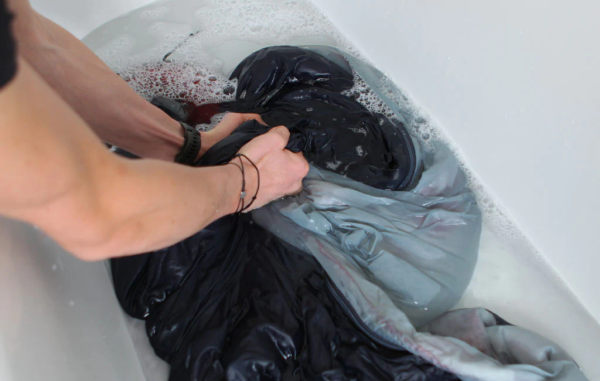
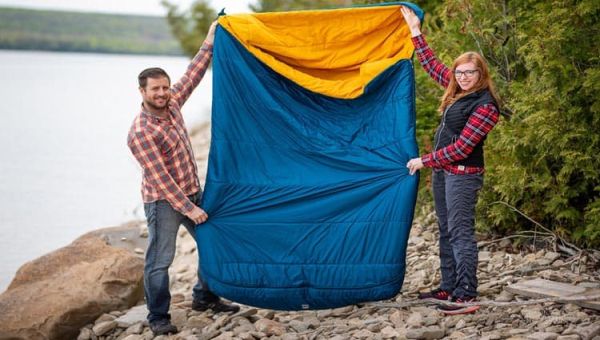
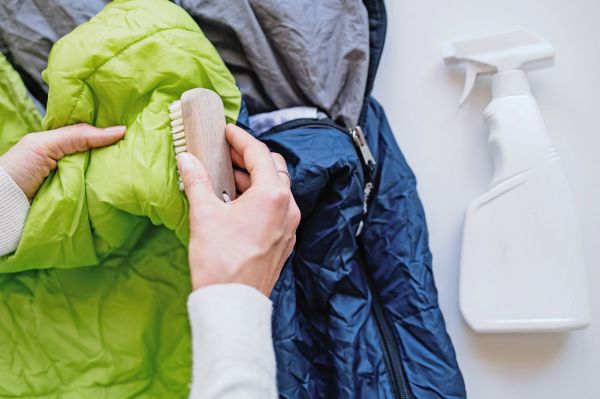
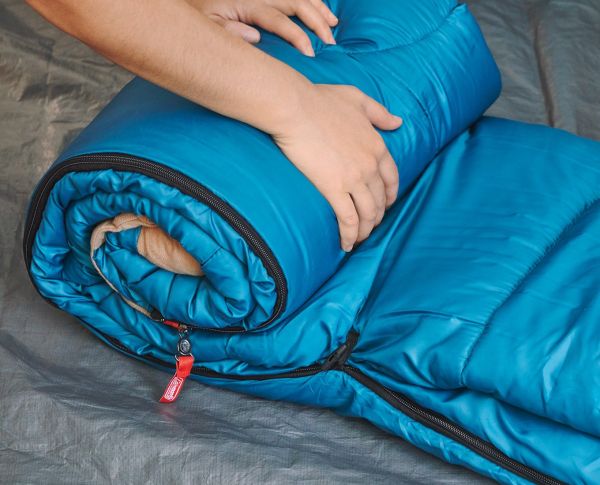
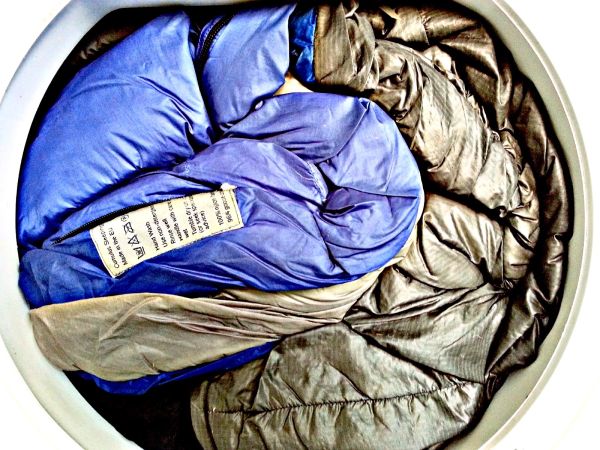
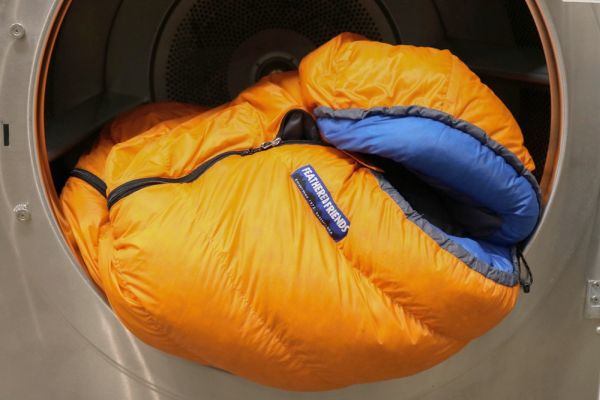
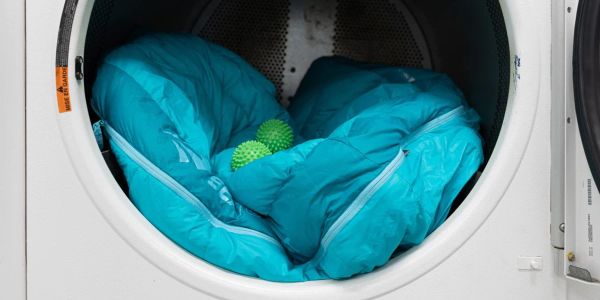




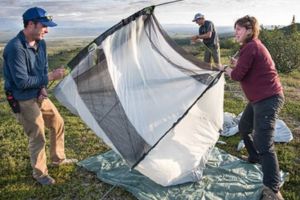
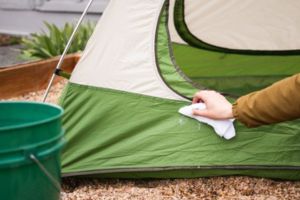
Leave A Comment